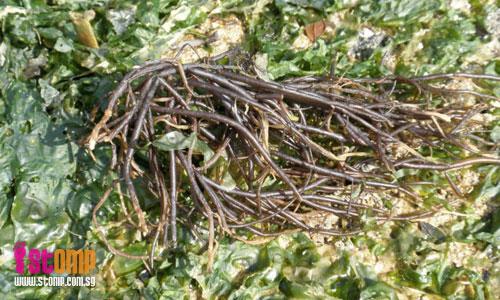
The beach at Pasir Ris is a medley of colours and beauty, according to STOMPer Swimmer, who snapped these pictures of the different things he spotted there.
"At low tide, the Rosy fiddler (Uca rosea) usually emerges from its burrow in the sand and frolic on the beach with its fellow crabs,” said the STOMPer in an email today (June 16).
"When the tide goes out at Pasir Ris Park beach, the beach is usually covered with a layer of green and brown seaweed.
"The crab moves very fast and when you approach it, it quickly disappears into the burrow.
"This beach is popular with swimmers and those who love marine life as crabs and mudskippers abound near the mangrove swamps."
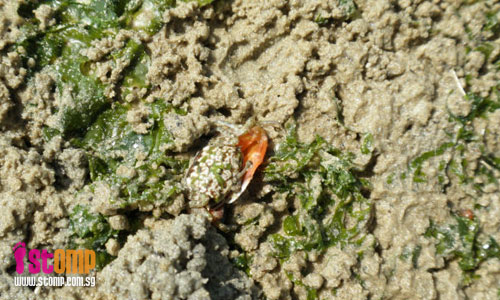
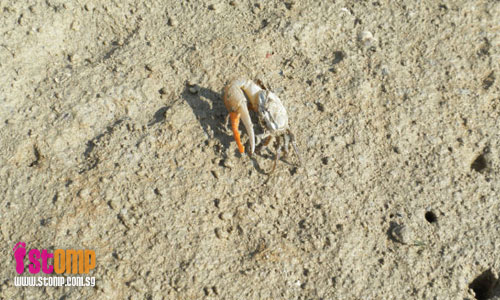
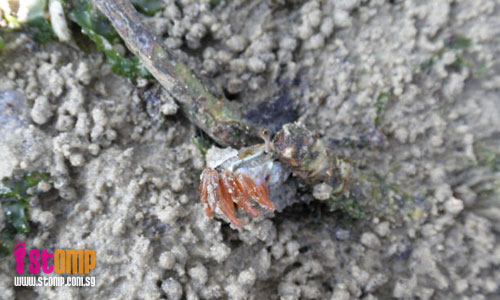
The fiddler crabs in the photo are not the rosy fiddler crab (Uca rosea), which is a locally endangered species found only in back mangroves. Instead, they are the much more common orange fiddler crab (Uca vocans).
This is a species commonly seen on many of our shores.

Pulau Hantu;
(Photo by Ria)
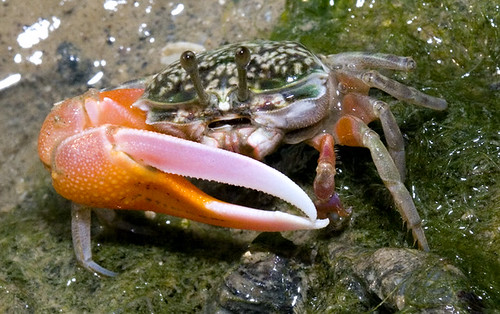
Kusu Island;
(Photo by Marcus)

Chek Jawa;
(Photo by Kok Sheng)
It seems to prefer shores where the sediment has a very fine texture, and the ground is quite soft and muddy. Although often found close to mangrove habitats, it is not actually a true mangrove specialist; other species of fiddler crabs live in mangrove forests.
Another fiddler crab species commonly found on our shores is the porcelain fiddler crab (Uca annulipes), which appears to prefer sandier shores than those inhabited by the orange fiddler crab.

Chek Jawa;
(Photo by Ria)
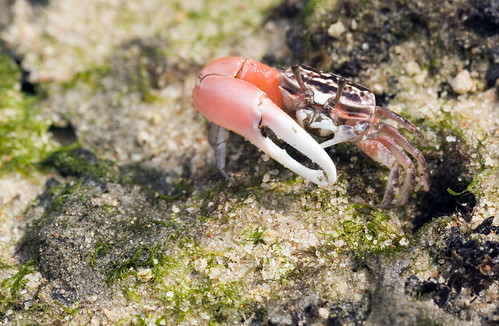
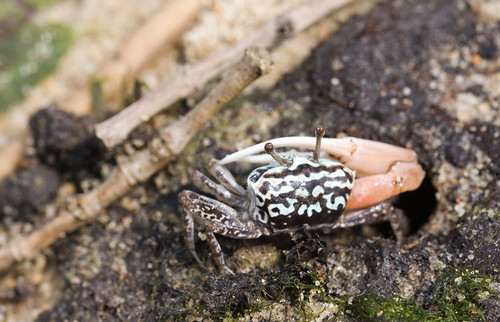
Noordin Beach;
(Photos by Marcus)
We do find other species of fiddler crab that we haven't managed to conclusively identify yet.
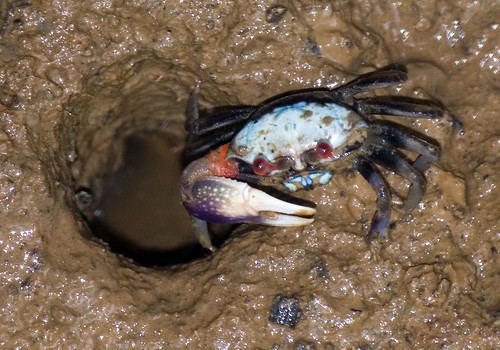
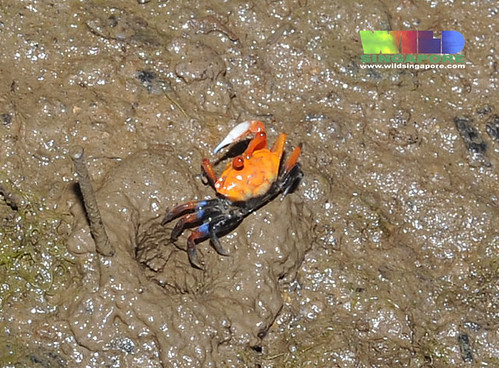
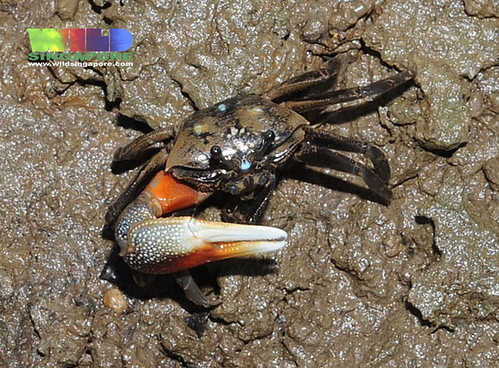
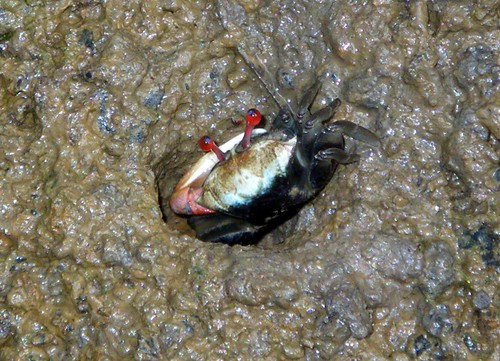

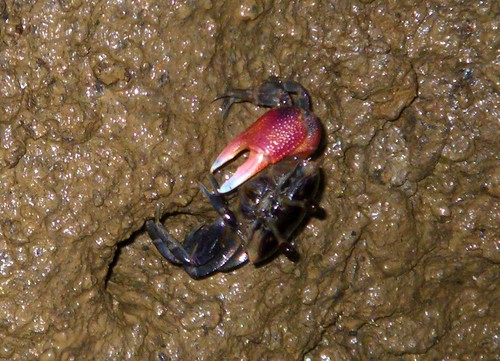
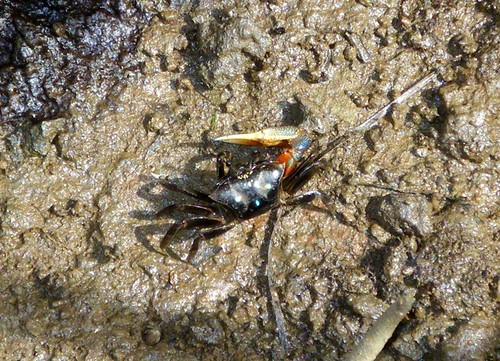

These unidentified fiddler crabs were photographed by Marcus, Ria and Kok Sheng in the mangroves along the Chek Jawa boardwalk. You can see many more of these colourful and mysterious fiddler crabs over at this post by Kok Sheng.
Fiddler crabs belong to the genus Uca, and are closely related to the ghost crabs (Ocypode spp.). As a genus, they are distributed throughout the world, primarily along the coasts in tropical and warm temperate waters. There are 97 recognised species.
7 species of fiddler crab are known to occur in Singapore; besides the widely distributed orange fiddler crab and porcelain fiddler crab mentioned above, the other species are much more restricted in distribution and choice of habitat. The other 5 species are:

Dussumier's fiddler (Uca dussumieri). It's not listed in A Guide to the Mangroves of Singapore, but is mentioned in Private Lives: An Exposé Of Singapore's Mangroves, as being the largest fiddler crab in Singapore, and prefers soft mud. I won't be surprised if some of the unidentified fiddler crabs pictured above are actually Dussumier's fiddler crab. There is often a large amount of variation within a single species, and it is difficult to positively identify fiddler crabs based on colour alone. The fact that fiddler crabs can change colours doesn't help matters.
(Photo from Yungan Township Office)

Uca forcipata. I have not been able to find any information about this species in Singapore.
(Photo by Chris Lukhaup)

Purple fiddler (Uca paradussumieri). According to A Guide to the Mangroves of Singapore, this species often occurs in soft mud, and juveniles are known to build chimney-like burrows. However, it's not mentioned in the more recent Private Lives: An Exposé Of Singapore's Mangroves. I'm wondering if there has been confusion between the 2 species; in the past, the purple fiddler was thought to be a subspecies of Dussumier's fiddler, and was classified as Uca dussumieri spinata. Only in 1973 was it listed as a separate species altogether.
So... are both dussumieri and paradussumieri present in Singapore? Or is only 1 out of the 2 present? How do we differentiate the 2 species, anyway?
(Photo by Peter Ng)

Rosy fiddler (Uca rosea). As mentioned earlier, this species is locally endangered, as the back mangrove habitat it prefers is often the first to be cleared and developed.
(Photo from A Guide to the Mangroves of Singapore)
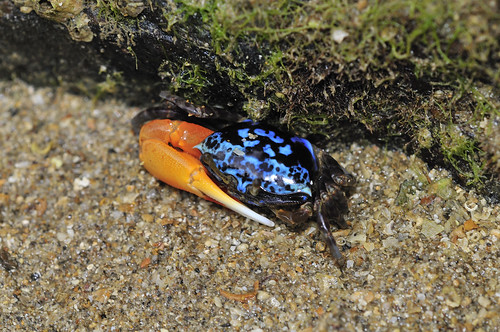
Uca tetragonon. This crab was first recorded in Singapore in the 1990s, when it was photographed on the rocky shore of Labrador. According to Private Lives: An Exposé of Singapore's Shores, it is an important indicator species for healthy reefs. More recently, it was found on Sultan Shoal in December 2008.
(Photo by E00425)